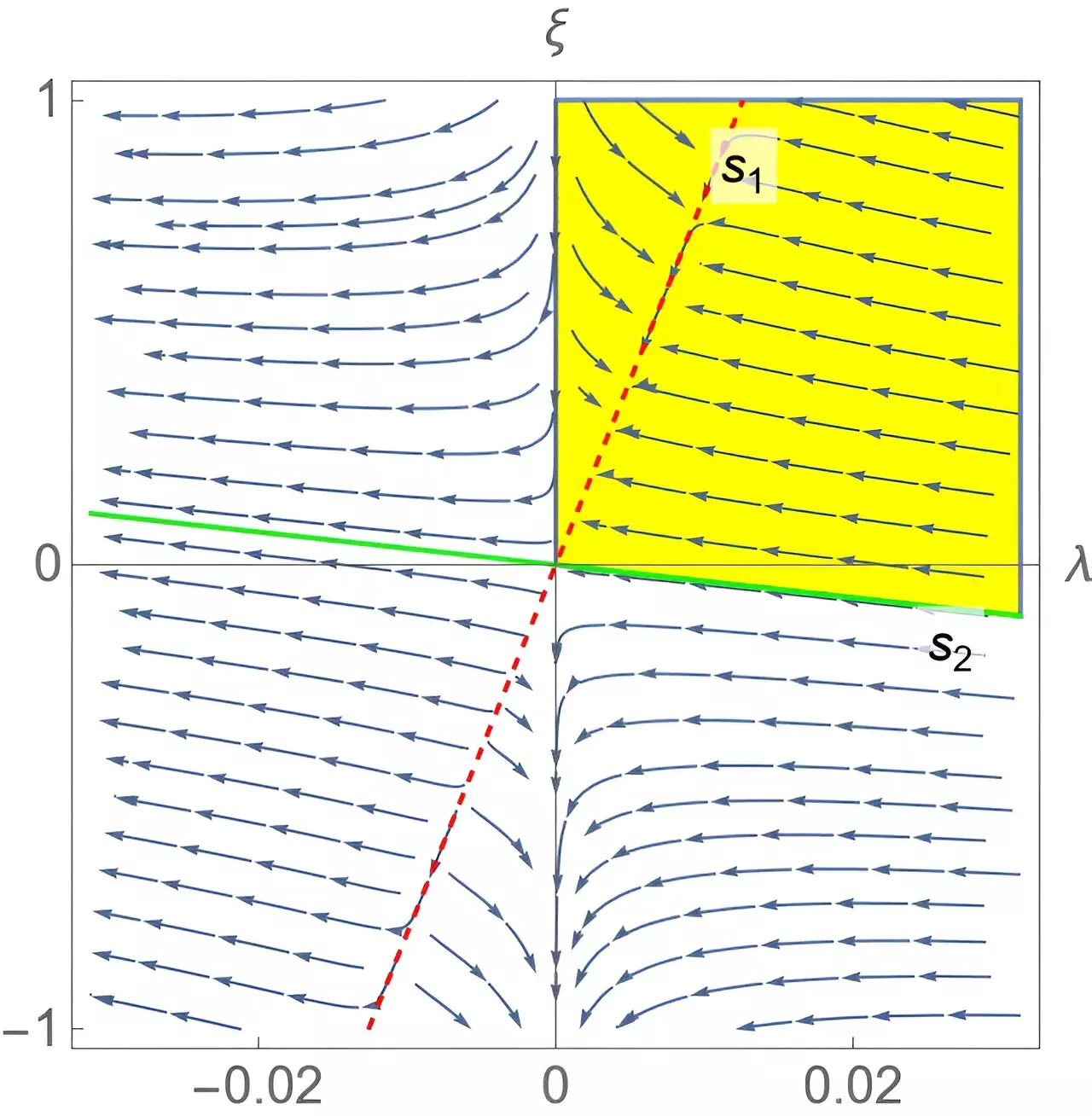Recent advances in the realm of quantum gravity have ignited an exciting wave of research, particularly centered around the concept of quadratic gravity. Researchers from the International School for Advanced Studies in Trieste, the University of Massachusetts, and the Instituto de Física Teórica at Universidade Estadual Paulista in Brazil have produced groundbreaking work that promises to enhance our understanding of gravitational phenomena. Their study, published in *Physical Review Letters*, showcases an alternative method for deriving the beta functions of couplings in quadratic gravity theory. This innovative approach has the potential to unlock new aspects of gravity’s behavior across various scales, presenting a remarkable step forward in theoretical physics.
The significance of this development lies not merely in a quest for academic accolades, but in the practical implications it carries for understanding gravity itself. John Donoghue, a co-author of the paper, articulated this notion succinctly when he referred to quadratic gravity as a “renormalizable quantum field theory” that could become instrumental for describing gravity in a comprehensive manner. The ambition here is grand: to bridge gaps that classical and quantum theories of gravity struggle to address.
Understanding Quadratic Gravity: More than Just an Extension
At its core, quadratic gravity is an elegant extension of Einstein’s general relativity, introducing sophisticated local terms that are quadratic in curvature to the Einstein-Hilbert action. This vital adaptation is crucial because it seeks to rectify certain limitations inherent in traditional gravity models. By utilizing quadratic gravity, physicists can aim to decipher various gravitational anomalies that elude standard interpretations.
Donoghue and his research team have previously focused on the intricacies of coupling constants in simpler paradigms, but their pivot toward quadratic gravity signifies a profound commitment to exploring more complex theories. As they delve into the “running” of these coupling constants—an essential feature in quantum field theories—they are not just treading familiar ground; they are actively forging new paths that could lead to revolutionary discoveries.
The Importance of Beta Functions
A key component of their investigation revolves around the beta function, a mathematical construct pivotal for describing the flow of quantum field theories across varying energy scales. Gabriel Menezes, another co-author of the paper, elucidated how significant insights can be gleaned from understanding this function. Particularly, insights regarding a theory’s high-energy behavior are invaluable, especially in a field as intricate as quantum gravity.
What makes the beta function so compelling is its ability to reveal how coupling constants transform with energy. Conceptually, as energy fluctuates in quantum amplitudes, so too does the relevant coupling constant, a phenomenon described as “running.” While several methodologies exist for calculating this running, discrepancies have surfaced within quadratic gravity, necessitating novel techniques that the team has introduced to clarify these variances. By offering new beta functions, Donoghue and colleagues aim to breathe new life into the exploration of gravity’s subtleties at the quantum level.
Potential Implications for Quantum Gravity
One of the most significant implications of this research revolves around how coupling constants might behave at high energy. The team posits that in environments characterized by particularly elevated energy levels, these constants could diminish to minimal values—a notion referred to as asymptotic freedom. Such a scenario is promising as it hypothetically sidesteps the emergence of unwanted unstable particles known as tachyons, preserving the theoretical and mathematical elegance of quadratic gravity.
In addition, Donoghue emphasizes that this avenue of research not only has immediate ramifications for understanding quadratic gravity but could also facilitate broader inquiries into the multifaceted landscape of quantum gravity theories. The peculiar attributes of quadratic gravity signal the need for a better delineation of its properties and its interactions within a larger theoretical framework.
Future Directions in Gravitational Research
The techniques introduced by this research group are poised to catalyze further investigations into the granular behaviors of gravitational interactions. By enriching the theoretical toolkit available to physicists, this work portends a more nuanced grasp of phenomena that fall under the umbrella of gravitational theory. The excitement surrounding the potential for groundbreaking discoveries in this field cannot be overstated.
Both Donoghue and Menezes illustrate an unwavering interest in advancing our understanding of the analytic structures underlying scattering amplitudes and cross-sections within the context of quadratic gravity. As researchers continue to refine these theories, they edge closer to real breakthroughs that have tantalizing implications not just for gravity itself but also for our comprehensive understanding of the universe. The momentum generated by this recent study, combined with its aspirations for the future, makes it clear that the pursuit of knowledge in this domain is anything but stagnant; it is a vibrant landscape ripe with possibilities, brimming with challenges yet to be overcome, and questions yet to be answered.


Leave a Reply